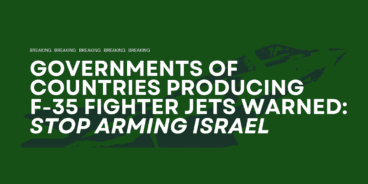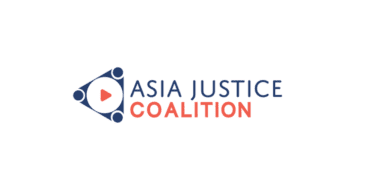
The AK-47, the Responsibility to Protect and the Arms Trade Treaty
When we think of the Holocaust our mind slips inexorably towards dismal images of cattle cars stuffed with people, or to gas chambers, crematoria and the cruel irony of the “Arbeit Macht Frei” gate. But of the six million Jews killed during the Holocaust over a million were shot with rifles and other small arms. They were not killed in concentration camps, but were murdered in fields or forests and pitched into mass graves hastily dug outside villages in Nazi-occupied Eastern Europe. Before Auschwitz, Sobibor or Treblinka, the Holocaust began with bullets.
The same is true of most mass atrocity crimes carried out since 1945. From the killing fields of Cambodia to the mass graves of Srebrenica and the burnt villages of Darfur, most of the killing was done with rifles and other small arms. It is for this reason that there is an enduring connection between preventing mass atrocities and confronting the international arms trade.
Despite mistakes and setbacks over the last twelve years, the UN World Summit’s 2005 adoption of the Responsibility to Protect (R2P) was a historic turning point in the battle against indifference, inaction and impunity regarding mass atrocity crimes. Since then we have made undeniable progress with regard to the idea that sovereignty entails responsibility. Our failures in Syria and Sri Lanka (to mention just two) have been catastrophic. But the international community has also had success in preventing atrocities or deploying peacekeepers to disrupt and deter perpetrators in the Central African Republic, South Sudan and a number of other conflicts. Politics in the real world is never without blemish, but R2P continues to save lives.
The Global Centre for the Responsibility to Protect works closely with the UN Security Council in New York, and with the Human Rights Council in Geneva, to push the international community to consistently uphold its preventive and protective responsibilities. But this is not just a question of providing early warning of developing risks in Burundi, the Philippines, or elsewhere. There is also a need to advance R2P via practical initiatives that undermine the ability of atrocity perpetrators to access the global market in lethal weaponry.
For example, the AK-47, or Kalashnikov, is the most popular weapon in the world today, with an estimated 70 million AK-47s currently in existence (Wilkinson, 2013). Numerous countries manufacture local variants of the ubiquitous assault rifle and while a new Chinese-made AK-47 might cost you $500, you can easily purchase one in many former conflict zones for as cheap as $50. When I lived in Johannesburg during the mid-1990s, leftover AK-47s from the civil war in Mozambique were still making their way through the townships, and some entrepreneurial gangs were even renting out their AK-47s to other aspiring criminals at an hourly rate.
There are many reasons for the AK-47’s enduring popularity. A fully loaded AK-47 weighs less than five kilograms (11 lbs) and is simple to operate. Among its other dubious attributes, this means that despite its lethality the AK-47 can be easily used by a child soldier. The AK-47 does not require much cleaning and it rarely jams, making it a superior killing machine.
During the 1960s and 70s, the AK-47 was the weapon of choice for freedom fighters across the developing world. Following a bitter anti-colonial war, in 1975 the new government of Mozambique even emblazoned an AK-47 on their national flag. I listened to my fellow anti-apartheid activists sing about AK-47s in South Africa during the 1990s. And while AK-47s undoubtedly helped many nations achieve liberation from colonialism, these days it is more often a weapon of mass destruction, especially in Africa.
In the civil wars in Somalia, Liberia and Sierra Leone the AK-47 was omnipresent. It has also been highly visible in recent armed conflicts in the Central African Republic, Mali, Sudan and South Sudan. In the Democratic Republic of the Congo, the UN has previously reported that at least ten variants of the AK-47 were circulating amongst the various militias and armed groups who were killing civilians. It has been estimated that there are still at least 300,000 guns in the Congo, not counting those officially in the hands of the army, police and peacekeepers (GRIP and BICC, 2012).
Meanwhile in the Middle East the proliferation of AK-47s and other weapons has been especially noticeable in Iraq, Syria and Yemen. When the so-called Islamic State seized Mosul in June 2014 they became the direct beneficiaries of decades of irresponsible arms flows into Iraq. The atrocities of so-called Islamic State fighters are committed mainly with weapons looted from Iraqi military stocks and previously provided by the United States, Russia and more than two dozen other countries (Amnesty international, 2015).
Overall, the legal global arms trade is now worth an estimated $100 billion annually. According to the respected Stockholm International Peace Research Institute (SIPRI), between 2012 and 2016, the five biggest arms exporters in the world were the United States (33% of all exports), Russia (23%), China (6.2%), France (6%) and Germany (5.6%). More than a quarter of these armaments were exported to the Middle East. The fact that four of the top five arms exporters in the world are also permanent members of the UN Security Council, a body mandated to maintain international peace and security, is unconscionable. Especially when one considers how much the issue of conflict in the Middle East has dominated the Council’s agenda.
Syria, in particular, has been a source of bitter division amongst the permanent members of the Security Council since 2011. According to SIPRI, Russia was the source of 78% of all of the Syrian government’s weapons at the time of the start of the civil war. This means that for the past six years, the government of President Bashar al-Assad has been killing civilians and committing atrocities with Russian-made bullets, rifles, rockets, bombs, tanks, mortars, artillery and attack helicopters (Reuters, 2012). Many of these came to Syria via Rosoboronexport, Russia’s main international arms exporter. Other states have also been providing weapons to President Assad’s enemies as the civil war, and the arms trade that sustains it, shows no signs of abating.
Meanwhile in Yemen, since March 2015 civilians have faced relentless bombing by a Saudi-led military coalition and ongoing attacks by Houthi rebels. Both sides have targeted civilian infrastructure and directly contributed to what the United Nations now considers to be one of the greatest humanitarian catastrophes in the world. Saudi Arabia, in particular, has faced harsh criticism for airstrikes in Yemen that appear to have directly violated international law. But this has not stopped the United States, another permanent member of the Security Council, from recently agreeing to a $110 billion arms contract with Saudi Arabia, despite objections from human rights organisations (Malsin, 2012). Indeed, Washington has celebrated this projected arms transfer as “the single largest arms deal in US history” (Sean Spicer, 2017).
Beyond fighter jets and guided missiles, the annual legal trade in small arms and light weapons, including AK-47s and other assault rifles, is now worth more than $8.5 billion a year, involving more than a thousand companies around the globe (Chelule, 2014). An estimated 12 billion bullets are also manufactured each year, enough to shoot every person on this planet (Oxfam, 2012). It is for this reason that the Global Centre for the Responsibility to Protect and other human rights organizations have advocated for an arms embargo to be imposed on South Sudan, Syria and other countries where governments use public funds to buy weapons and ammunition to commit atrocities against their own people.
History teaches us that the proliferation of small arms and light weapons dramatically increases a state’s risk for genocide, war crimes, ethnic cleansing and crimes against humanity, a point explicitly made in the UN’s Framework of Analysis for Atrocity Crimes. This is also recognised in UN Security Council resolutions 2117 and 2220 on the arms trade. The growing threat of violent extremism in many parts of the world today also highlights the significant risks to civilians when fragile states and permeable borders allow for the illicit trade in assault rifles and other deadly weapons. Boko Haram, the so-called Islamic State, and various other non-state armed groups benefit from the global market of cheap weapons and plentiful ammunition. The ultimate price of this illegal commerce is paid for by the populations these groups prey upon.
It is for these reasons that we have urged all UN member states to ratify and implement the Arms Trade Treaty (ATT) (Adams, 2015). The ATT was the result of a long campaign by both states and civil society to constrain the arms trade and prevent weapons from falling into the hands of terrorists, transnational criminals and governments who may use them commit mass atrocities and other human rights abuses. Our partners at Amnesty International (2012), who helped lead the ATT campaign, pointed out that it was absurd that the global trade in bananas was more rigorously regulated than the trade in AK-47s and other conventional weapons.
Since the ATT entered into force during December 2014, at least 130 states have become signatories and 89 have ratified the Treaty. Any academic or student who is committed to mass atrocity prevention should check if their government has ratified the ATT (see UN Office for Disarmament Affairs). If they have, they should be held to its commitments. If they have not, then there is an obvious need for further public pressure.
In the very first issue of this R2P Student Journal, my friend and colleague Alex Bellamy (2016) wrote that:
R2P is not a self-fulfilling norm. It is a statement of shared expectation – a commitment of what the world ought to do in order to end genocide and mass atrocities once and for all. We all have a role to play and the choices each of us make will shape whether or not things change for the better…
Like Professor Bellamy I am glad that this academic journal and the R2P Student Coalition exists. These are troubling times. There are currently an estimated 65 million people in the world displaced by conflict, atrocities and persecution. But if my own past experience as an activist of the international anti-apartheid movement and a former member of the African National Congress taught me anything, it is that cynicism and complacency have never prevented a single mass atrocity and will not change anything. What the world desperately needs is a new generation of students and scholars who not only critically engage with R2P, but will also become human rights activists and advocates. I hope the authors, editors and readers of this journal will take past lessons in mass atrocity prevention to heart, and turn these words and ideas into action.
Related Content


